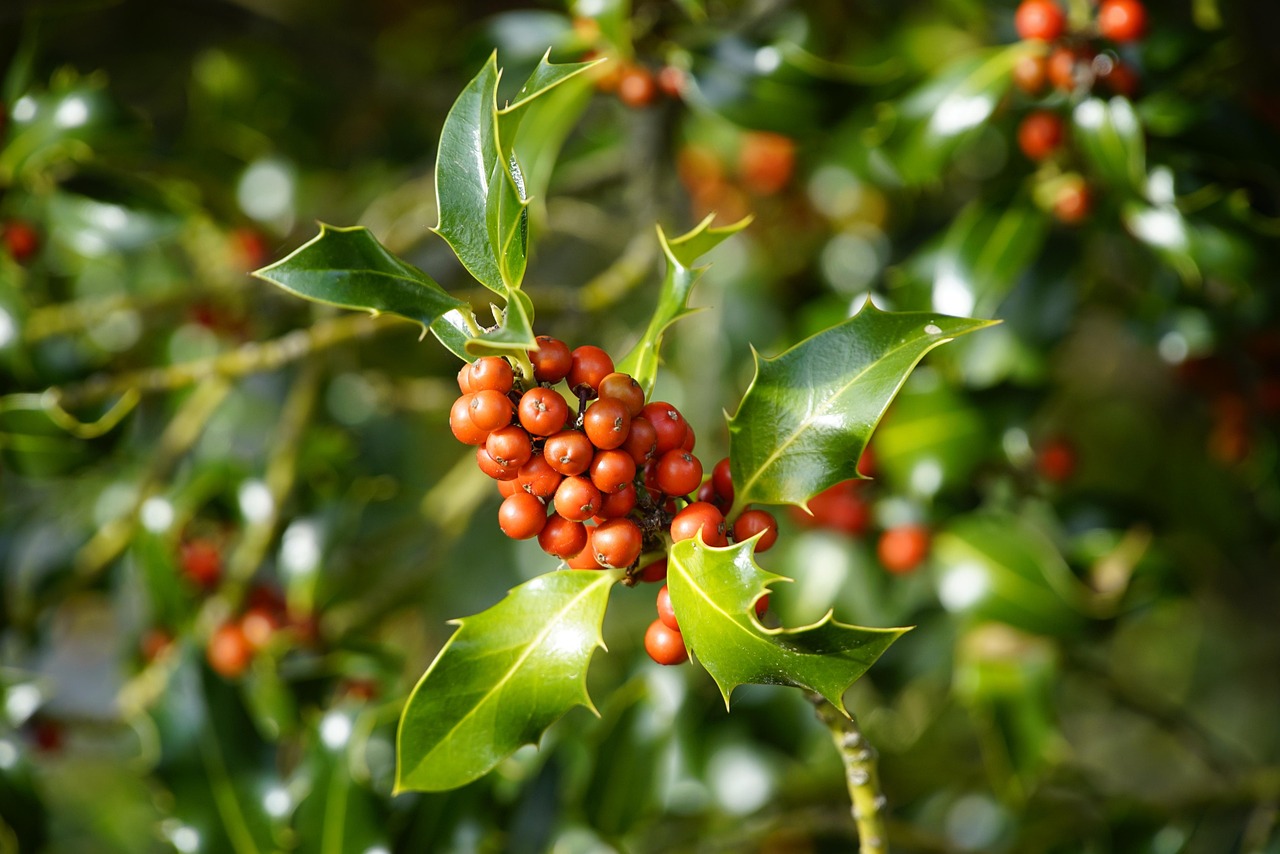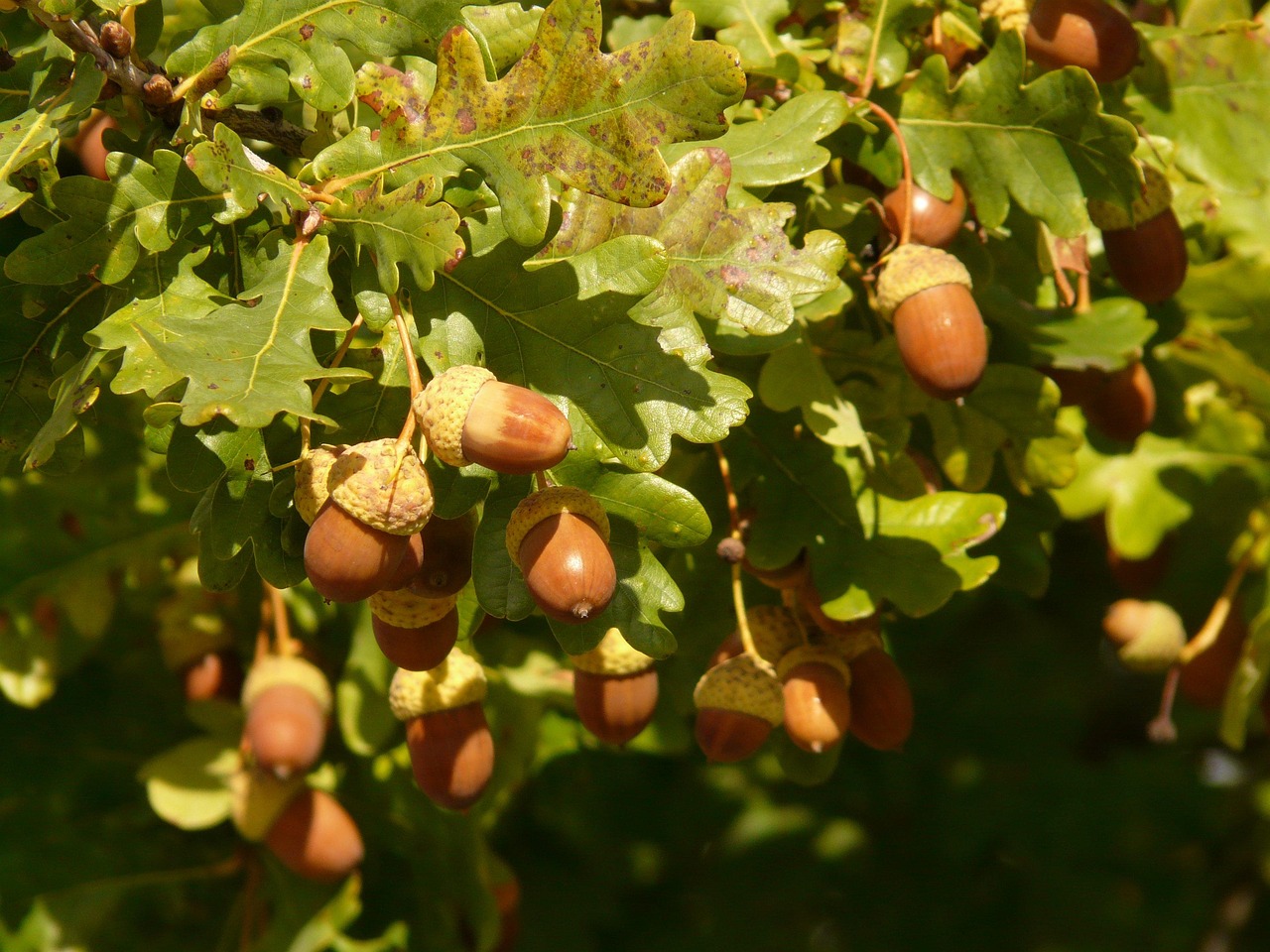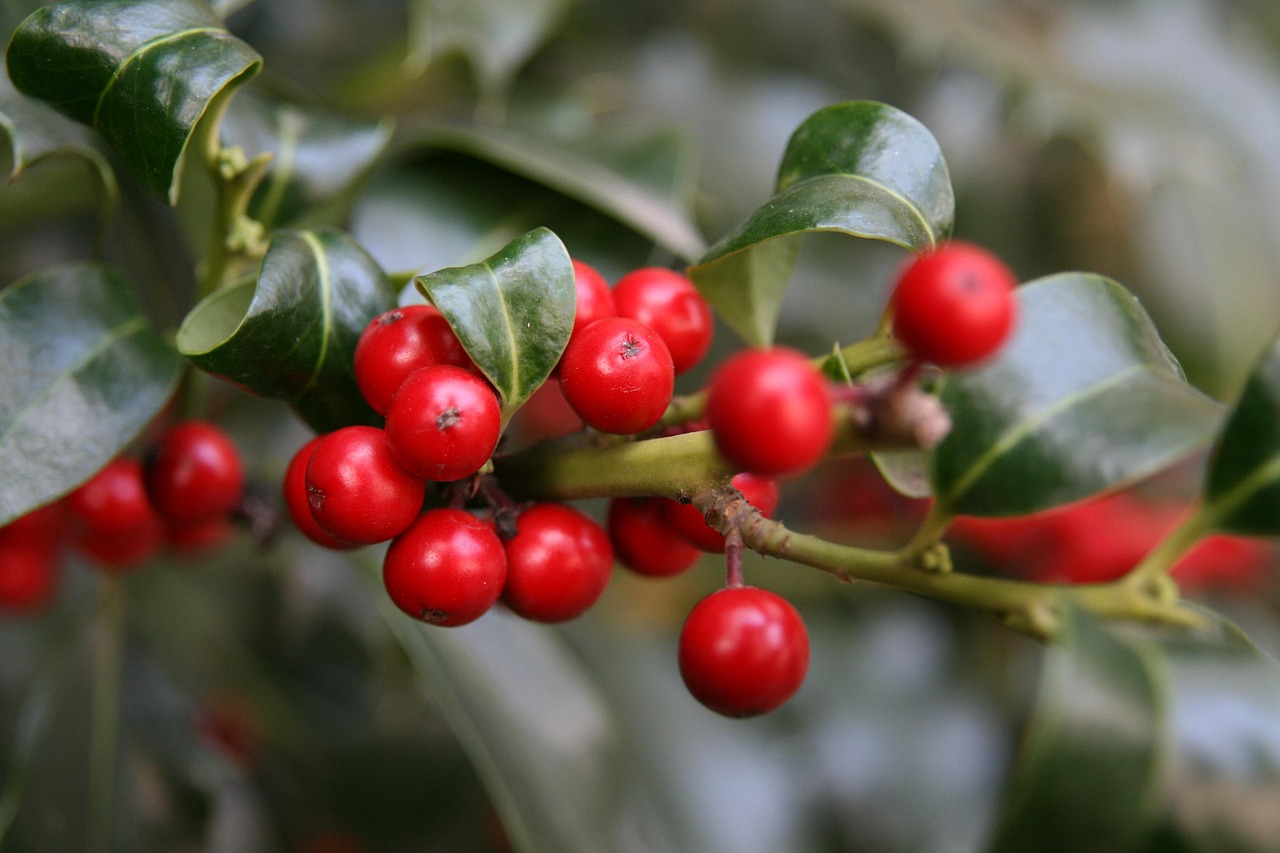The Quercus Ilex, or holm oak, typically exhibits a moderate growth rate. In optimal conditions, it can grow around 12 to 24 inches per year, eventually reaching heights of up to 60 feet. This makes it a valuable species for evergreen oak forests.
Understanding Quercus Ilex
The Quercus Ilex, commonly known as the holm oak or evergreen oak, is a species native to the Mediterranean region. It thrives in various environments, from coastal areas to mountainous regions. This tree is characterized by its dense foliage and ability to withstand drought, making it a key species in many ecosystems.

Quercus Ilex plays an important role in supporting biodiversity. It provides habitat and food for numerous species of wildlife, including birds, insects, and mammals. The acorns produced by the holm oak are particularly significant as they serve as a vital food source for various animals.
Growth Rate Factors
The growth rate of Quercus Ilex can be influenced by several factors. Understanding these factors is essential for managing and cultivating this species effectively. Key factors include:
- Soil Quality: Well-drained soils rich in organic matter promote faster growth.
- Climate: Mild temperatures and adequate rainfall support optimal growth rates.
- Water Availability: While drought-resistant, consistent watering during the early years can enhance growth.
- Sunlight Exposure: Full sun exposure leads to better photosynthesis and growth.
Growth Patterns
Over time, the Quercus Ilex develops a unique growth pattern. Young trees tend to grow more rapidly than mature ones. As they age, their growth rate slows down but can continue for many decades. The tree can live for hundreds of years, adding to its stature and ecological significance.

Typical Growth Stages
The growth stages of Quercus Ilex can be divided into several phases:
- Seedling Stage: The first few years are crucial for establishing a strong root system.
- Young Tree Stage: This stage usually lasts from years 3 to 10, with rapid vertical growth.
- Mature Stage: After around 20 years, the tree reaches its full height but continues to expand its canopy.
- Old Age Stage: Beyond 100 years, growth slows significantly, but the tree remains vital to its ecosystem.
Ecological Importance
The ecological role of Quercus Ilex extends beyond its physical presence in the landscape. The tree contributes significantly to soil stabilization and prevents erosion due to its extensive root system. Additionally, its evergreen leaves provide year-round cover, benefiting various organisms.
This species is also pivotal in carbon sequestration. By absorbing carbon dioxide from the atmosphere, Quercus Ilex helps mitigate climate change impacts. Its longevity and large biomass make it an excellent carbon sink throughout its lifespan.

Distribution and Habitat
Quercus Ilex is predominantly found in regions around the Mediterranean Sea. Its adaptability allows it to thrive in various habitats, from dry rocky slopes to moist riverbanks. The tree is often part of mixed forests and stands alongside other species like Pinus and Cedrus.
| Region | Typical Soil Types | Average Height |
|---|---|---|
| Mediterranean Basin | Limestone, Clay | 40-60 feet |
| Southern Europe | Sandy Loam | 30-50 feet |
| Northern Africa | Clayey Soils | 20-40 feet |
In conclusion, understanding the growth rate and ecological significance of Quercus Ilex enhances our appreciation for this majestic tree species. Its ability to adapt and thrive in diverse environments underscores its importance in evergreen oak forests and beyond.
Growth Conditions for Quercus Ilex
The growth rate of Quercus Ilex is significantly influenced by its environmental conditions. Understanding these conditions can help in cultivating this species effectively. Key factors include soil characteristics, climate, and management practices.
Soil Characteristics
Soil plays a crucial role in the growth of Quercus Ilex. The tree prefers well-drained soils that are rich in organic matter. Here are some important soil characteristics:

- pH Level: Quercus Ilex thrives in slightly acidic to neutral soils, typically with a pH range of 6.0 to 7.5.
- Drainage: Good drainage is essential to prevent root rot and other diseases.
- Organic Matter: High organic content improves nutrient availability and soil structure.
Climate Requirements
The climate where Quercus Ilex flourishes is typically characterized by mild winters and warm, dry summers. Here are several climate factors that affect its growth:
- Temperature: Ideal growing temperatures range from 60°F to 90°F. Extreme cold can damage young trees.
- Rainfall: While the tree is drought-resistant, it benefits from annual rainfall of at least 20 inches.
- Humidity: Moderate humidity levels support growth, particularly during the growing season.
Cultivation Practices
Effective cultivation practices can enhance the growth rate of Quercus Ilex. These practices focus on soil management, watering, and pest control.
Soil Management
Proper soil management is vital for the healthy growth of Quercus Ilex. Regular testing and amendments can lead to better growth outcomes:
- Soil Testing: Conduct regular tests to determine pH and nutrient levels.
- Fertilization: Use organic fertilizers to improve nutrient availability without harming the environment.
- Mulching: Apply mulch to retain moisture and suppress weeds around the base of the tree.
Watering Techniques
While Quercus Ilex can tolerate drought, proper watering during the early stages of growth is essential:
- Deep Watering: Water deeply but infrequently to encourage deep root growth.
- Drip Irrigation: Consider using drip irrigation to deliver water directly to the roots.
- Rainwater Harvesting: Use rain barrels to collect water for irrigation purposes, promoting sustainability.
Pest and Disease Management
Like all tree species, Quercus Ilex can face threats from pests and diseases. Early detection and management are key to maintaining healthy trees.
Common Pests
Understanding common pests can help in their management:
- Caterpillars: Various caterpillars may feed on leaves. Regular inspections can help catch infestations early.
- Aphids: These small insects can weaken trees by sucking sap. They can be controlled using insecticidal soap or neem oil.
- Borers: Wood-boring insects may damage trunks. Proper care and monitoring are essential for prevention.
Disease Prevention
Diseases can threaten the health of Quercus Ilex. Good cultural practices can reduce risks:
- Root Rot: Ensure proper drainage to prevent root rot caused by waterlogged soils.
- Leaf Spot: Remove affected leaves to reduce the spread of fungal infections.
- Canker Diseases: Maintain tree health through proper watering and pruning techniques to prevent stress-related issues.
The Role of Quercus Ilex in Ecosystems
The presence of Quercus Ilex in ecosystems offers numerous benefits. Its evergreen nature provides year-round cover, enhancing habitat diversity.
This species supports various wildlife by providing shelter and food resources. The acorns produced are a primary food source for birds and mammals, playing a vital role in local food chains.
Additionally, Quercus Ilex contributes to soil health through leaf litter decomposition, enriching the soil with nutrients over time. This process fosters a healthy ecosystem for other plants and organisms.
| Benefit | Description |
|---|---|
| Biodiversity Support | Provides habitat for various species of flora and fauna. |
| Soil Enrichment | Leaf litter improves soil quality and promotes plant growth. |
| Carbon Sequestration | Aids in absorbing carbon dioxide, helping combat climate change. |
The growth rate and ecological importance of Quercus Ilex highlight its value in forest ecosystems. Understanding how to cultivate and manage this species effectively ensures its continued presence in diverse environments.
Propagation Methods for Quercus Ilex
Propagating Quercus Ilex can be achieved through several methods, each with its advantages and challenges. Understanding these methods is essential for successful cultivation and reforestation efforts.
Seed Propagation
Seed propagation is the most common method for growing Quercus Ilex. Here are steps and considerations for successful seed germination:
- Seed Collection: Collect acorns in the fall when they drop from the tree. Choose healthy, undamaged seeds for the best results.
- Stratification: To improve germination rates, seeds should undergo a cold stratification process. Store seeds in a moist medium in the refrigerator for 30 to 60 days.
- Sowing: Plant seeds in well-drained soil, ideally in early spring. Cover them lightly with soil and water thoroughly.
- Germination Care: Keep the soil moist and provide sunlight. Germination usually occurs within a few weeks.
Vegetative Propagation
Vegetative propagation involves using cuttings to grow new trees. This method can ensure genetic uniformity and faster growth. Here are the steps:
- Selection of Cuttings: Choose healthy, semi-hardwood cuttings from established trees during late spring or early summer.
- Preparation: Trim cuttings to about 6 inches in length, ensuring a few leaves remain at the top.
- Rooting Hormone: Dip the cut end in rooting hormone to encourage root development.
- Planting: Insert the cuttings into a well-draining potting mix and water lightly. Place them in a shaded area until roots develop.
Growth Rate Comparison with Other Oak Species
To understand the growth rate of Quercus Ilex, it is helpful to compare it with other oak species. Below is a table that highlights key differences in growth rates of various oak species:
| Species | Common Name | Average Growth Rate (inches/year) | Typical Height (feet) |
|---|---|---|---|
| Quercus Ilex | Holm Oak | 12-24 | 40-60 |
| Quercus robur | English Oak | 24-36 | 60-100 |
| Quercus palustris | Pinn Oak | 24-30 | 50-70 |
| Quercus alba | White Oak | 12-24 | 50-80 |
Factors Influencing Growth Rates Among Oaks
The differences in growth rates among oak species can be attributed to several factors:
- Genetics: Each species has inherent genetic traits that determine its growth potential.
- Environmental Conditions: Soil quality, climate, and water availability significantly impact growth rates.
- Cultivation Practices: Management techniques such as watering, fertilization, and pest control can enhance growth.
Managing Quercus Ilex in Urban Environments
The cultivation of Quercus Ilex in urban settings poses unique challenges and opportunities. Managing these trees effectively can contribute to urban forestry goals.
Site Selection
Selecting the right site is crucial for the successful growth of Quercus Ilex in urban areas:
- Pavement Considerations: Ensure that the tree has adequate space away from sidewalks and roads to allow for healthy root development.
- Soil Quality: Urban soils may require amendment to improve drainage and nutrient levels before planting.
- Sunlight Access: Choose locations that provide full sun, as Quercus Ilex thrives best with ample sunlight.
Pest Management in Urban Settings
Pests can be more prevalent in urban environments due to limited biodiversity. Implementing effective pest management strategies is essential:
- Regular Monitoring: Inspect trees frequently for signs of pest infestations or disease symptoms.
- Integrated Pest Management (IPM): Utilize IPM practices to minimize chemical use while effectively controlling pests.
- Public Education: Raise awareness among local communities about the importance of tree care and pest prevention.
The Future of Quercus Ilex in Forest Restoration
The restoration of forests often includes the reintroduction of native species like Quercus Ilex. Its adaptability makes it an ideal candidate for various restoration projects.
This species can help restore ecological balance in degraded areas. Its role as a pioneer species allows it to establish quickly and improve soil conditions, paving the way for other plant species to thrive.
The potential for Quercus Ilex to sequester carbon further enhances its importance in combating climate change. As global efforts to restore forests increase, focusing on resilient species like Quercus Ilex will be critical for successful outcomes.
The continued study and management of Quercus Ilex will be vital for sustaining its populations and maximizing its ecological benefits in diverse environments.
Challenges Facing Quercus Ilex
Despite the numerous benefits and adaptability of Quercus Ilex, several challenges threaten its survival and growth. Addressing these challenges is essential for maintaining healthy populations of this tree species.
Climate Change Impacts
Climate change poses significant risks to Quercus Ilex. Changes in temperature and precipitation patterns can directly affect its growth and health:
- Increased Temperatures: Higher temperatures can stress the tree, making it more susceptible to pests and diseases.
- Drought Conditions: Extended periods of drought can limit growth and reduce acorn production, impacting wildlife that depends on it.
- Extreme Weather Events: Increased frequency of storms and heavy rainfall can lead to soil erosion and root damage.
Pests and Diseases
Quercus Ilex faces threats from various pests and diseases that can hinder its growth. Some of the most concerning include:
- Oak Wilt: A fungal disease that can spread rapidly, causing trees to decline and die.
- Gypsy Moth: This invasive insect can defoliate trees, weakening them over time.
- Scale Insects: These pests can sap the vitality of trees, leading to reduced growth rates and increased vulnerability to other stresses.
Conservation Efforts for Quercus Ilex
To ensure the sustainability of Quercus Ilex, various conservation efforts are underway. These initiatives aim to protect existing populations and promote healthy growth in natural habitats.
Habitat Restoration
Restoration projects focus on improving habitat conditions for Quercus Ilex. Key strategies include:
- Reforestation: Planting Quercus Ilex in areas where it has been depleted helps restore ecological balance.
- Invasive Species Management: Removing invasive plant species allows Quercus Ilex to thrive without competition.
- Community Engagement: Involving local communities in restoration efforts promotes stewardship and awareness of the tree’s ecological importance.
Research and Monitoring
Ongoing research is critical for understanding the needs and challenges facing Quercus Ilex. Monitoring programs help track changes in growth rates, health, and population dynamics.
This data can inform management practices and guide conservation efforts. Collaboration between researchers, local communities, and government agencies enhances the effectiveness of these initiatives.
Final Thoughts
The Quercus Ilex serves as a vital component of evergreen oak forests, contributing significantly to biodiversity and ecosystem health. Its moderate growth rate, coupled with its ability to adapt to various environmental conditions, makes it a valuable species for both natural and urban landscapes.
As we face ongoing challenges such as climate change, pests, and habitat loss, the importance of effective management and conservation strategies for Quercus Ilex becomes increasingly evident. By focusing on sustainable practices, we can ensure this species continues to thrive for future generations.
In summary, promoting awareness about the ecological benefits of Quercus Ilex, supporting restoration efforts, and implementing research initiatives will be pivotal in maintaining its populations. As we invest in the future of our forests, the role of Quercus Ilex will remain central to our ecological success.
